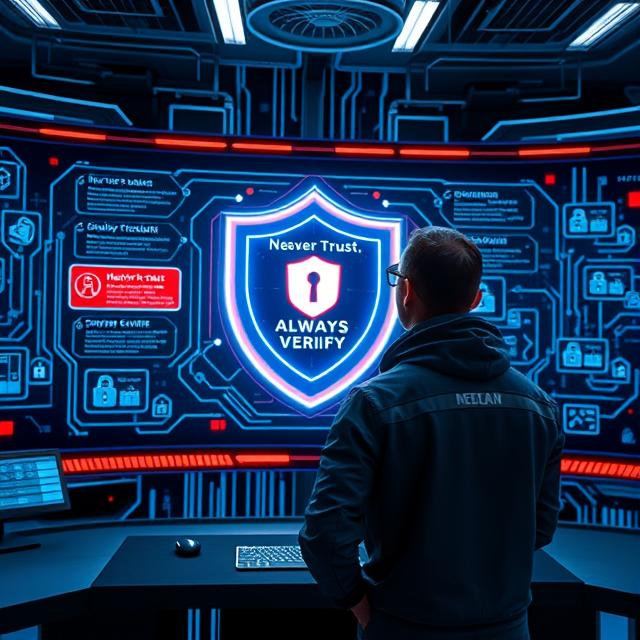In our digital age old-school security methods just don’t cut it anymore. Online dangers are growing fast, and companies need to move away from outdated defenses that protect the edges. They need to get ahead of the game. That’s where Zero-Trust Architecture (ZTA) steps in—it’s changing the game in how we think about security.
What is Zero-Trust Architecture?
Zero-trust is a new way to look at cybersecurity. It follows one simple but powerful rule: don’t trust anyone check everything. Old security models thought the inside of a network was safe and only the outside was dangerous. But zero trust sees every user and device as a possible threat until they prove they’re not.
Core Principles of Zero-Trust
- **Verify ** – Each request to access has to go through tough checks to prove identity and get permission, no matter where it’s from.
- Least Privilege Access – People and devices get the bare minimum rights they need to do their jobs, which cuts down on danger.
- Assume Breach – Safety steps are set up thinking bad guys might already be in the network making sure threats are boxed in.
Why Zero-Trust Matters
- Stronger Security: Gets rid of blind trust, which cuts down on ways attackers can get in.
- Better Visibility: Checking who’s who all the time and keeping an eye on things shows what’s happening on the network.
- Faster Threat Response: Spotting problems and stopping them keeps damage from spreading.
- Regulatory Compliance: Meets security rules like GDPR CCPA, and NIST 800-207.
How to Implement Zero-Trust
To switch to zero-trust , companies need to bring together key security parts:
- Identity & Access Management (IAM): Tough multi-factor authentication (MFA) and user verification.
- Network Segmentation: Splitting the network to stop unauthorized sideways movement.
- Microsegmentation: Putting in place finer controls to isolate key resources even more.
- Data Protection: Encryption and Data Loss Prevention (DLP) make sure sensitive info stays safe.
- Continuous Monitoring: Real-time analytics and threat detection tools to spot odd events.
Challenges of Zero-Trust
While the perks are obvious bringing in zero trust has its obstacles:
- Implementation Complexity: A complete shift requires careful planning and execution.
- Cost Considerations: New security tech and infrastructure upgrades can be expensive.
- User Experience: Tight access controls might create hassles for employees and users.
The Future of Zero-Trust Security
Despite these hurdles, zero-trust is becoming the top choice for cybersecurity. As companies move to cloud-based setups and remote work becomes common, a zero-trust approach keeps data, apps, and networks safe, no matter where users or devices are.
In a time when cyber threats are bound to happen, zero-trust isn’t just an option—it’s a must for organizations that want to stay one step ahead of attackers and shield their most valuable assets.
